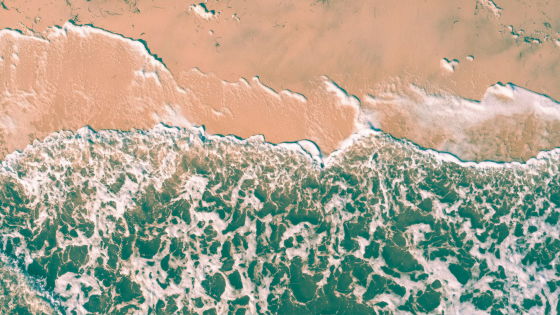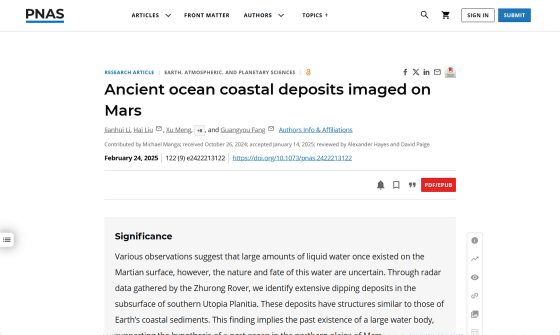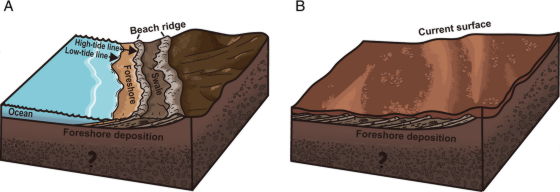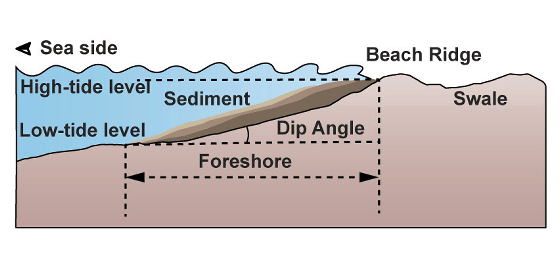What appears to be an ancient 'coastline' found underground on Mars; could this be evidence that Mars once had an ocean?

At the time of writing, Mars has a harsh environment with a dry surface and violent dust storms, but it is believed that long ago it was a planet rich in water, which is important for life. A new study based on data collected by China's Mars exploration rover
Ancient ocean coastal deposits imaged on Mars | PNAS
https://www.pnas.org/doi/10.1073/pnas.2422213122

Gulf of Mars: Rover finds evidence of 'vacati | EurekAlert!
https://www.eurekalert.org/news-releases/1074453
Ancient beaches testify to long-ago ocean on | EurekAlert!
https://www.eurekalert.org/news-releases/1074164
Ancient Beaches Found on Mars Reveal The Red Planet Once Had Oceans : ScienceAlert
https://www.sciencealert.com/ancient-beaches-found-on-mars-reveal-the-red-planet-once-had-oceans
Previous research has found evidence that Mars was once rich in water, and it has been reported that water frost falls on Olympus Mons , the largest volcano in the solar system.
It turns out that 'water frost', which was thought to be impossible, falls on Olympus Mons near the equator on Mars - GIGAZINE

A new Chinese and American research team analyzed underground observation data collected by China's Mars exploration rover Zhurong, which began operations in 2021, in the Utopia Planitia region in the northern hemisphere of Mars. Zhurong is equipped with a ground-penetrating radar, which can investigate rock layers up to 80 meters underground from the surface by taking advantage of the fact that radio waves bounce differently off materials of different densities.
After analyzing the data from the Zhurong probe, the research team discovered that there is a structure buried beneath Mars that appears to be an 'ancient coastline.'
The structure found beneath Utopia Planitia is a thick layer of sediment sloping upward at a 15-degree angle, similar to coastlines on Earth, the team said. 'The structure doesn't look like sand dunes, it doesn't look like impact craters, it doesn't look like lava flows,' said study co-author Michael Manga, a geophysicist at the University of California, Berkeley. 'So we started thinking about an ocean.'
In the figure below, 'A' is an image of the ancient coastline based on observational data from the Zhurong, and 'B' is an image of the structure after the sea disappeared and the coastline was buried.

The tectonic features indicate the presence of rivers, waves and tides that carried sediment. Because such deposits would take time to form, and because small bodies of water the size of a lake would not be able to support sufficient waves or tides, the data suggest that Mars has had a water-circulating ocean for millions of years.
'The bigger the body of water, the bigger the tides can be, and there's more space and time for the wind to create bigger waves. Bigger tides and waves help form beaches,' Manga told Science Alert.
The diagram below shows how coasts accumulate on Earth. 'Foreshore' refers to a beach that accumulates in a place between the 'High-tide level', which is the coastline at high tide, and the 'Low-tide level', which is the coastline at low tide, and where the water repeatedly sinks and emerges above the water. A similar coastline has also been found underground on Mars.

'The oceans are important to the planet because they have a huge impact on the climate, they shape the planet's surface and can make environments habitable for life,' Manga said. 'Coastlines are the best places to look for evidence of past life.'
Related Posts:
in Science, , Posted by log1h_ik







